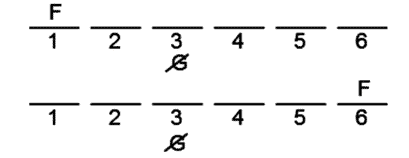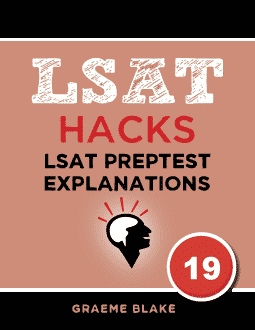Game Setup
This is a linear game. We can split the game into two scenarios: One where F is first, and the other where F is second. This makes it easier to visualize the possibilities when the questions give new rules.

The next two rules can be combined. J is before Q. And Q is right in front of R. So J is in front of QR.

The box around QR shows that they must be beside each other, in that order.
The final rule lets us add a bit more detail to our scenarios. We can see what happens if G goes in 3, and what happens if G doesn’t go in 3.

If G is in 3, Q is in 5. So R must be in 6. That means F can only go in 1. J and H can go in 2 or 4. J is before Q no matter where it goes
For our other scenarios, we’ll add in a rule that says G doesn’t go in 3.

Some people wonder why I do this. It’s simple. It’s valuable to know what happens when G is in 3: almost everything falls into place.
But you can’t just draw that scenario alone. You also need to put the not G under 3 in the other scenarios because it’s very, very easy to forget about the rule. The not G reminds you that you already drew a scenario for what happens when G is in 3.


Leave a Reply